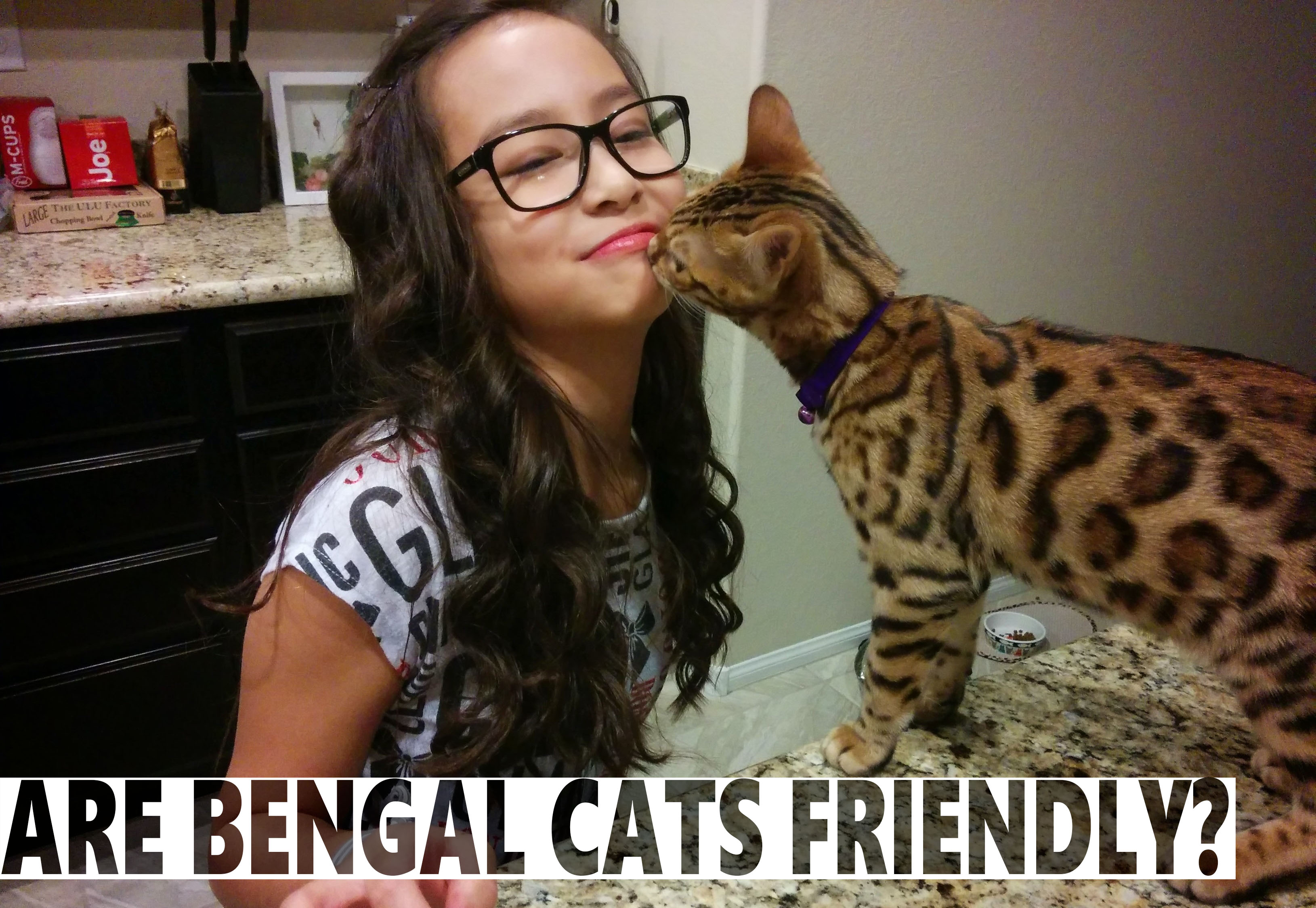"The domestic cute and furry feline wearing a leopard jacket."
That's how most cat enthusiasts will describe their Bengals. Indeed that crude definition does not fall from the mark, considering that Bengals are a cross between the Asian Leopard cats with the ordinary domestic cat.
The result, as you would expect, is a stunningly beautiful and fiercely intelligent feline with the amiable disposition of a household kitten. As genetics would have it, Bengal cats inherit an array of unique physical and temperamental features of their generational decedents.
If anything, that's why most people will wonder if these cats are friendly enough to keep as household pets. Well, here's a quick overview on that.
1. Intelligent and Inquisitive Cats
As far as their personality goes, Bengals are arguably the most intelligent and inquisitive of all domestic felines. It is even rumored that they will occasionally outwit the exceedingly shrewd Siamese cat.
Their intense intelligence can be as well traced back to their wild ancestry that links them to wild Asian Leopard cats. Speaking of which, this ancestry is also the genesis to a few strange behavioral tendencies and quirks that this breed is best known for.
A good example is the Bengal's obsession with water.
Almost all Bengal cats that we have come across will drink their water by dipping their front paw in the bowl rather than just licking it off straight from the dish.
The Bengal's liking for water - which stems from the Asian Leopard cat's soft spot for swamps and rivers - implies that you ought to be extra vigilant if you have a water cooler or fish tank in your home.
A Bengal's wild heritage also implies that it carries the genes of their genealogical father who is not only an exceptional fisher but also a remarkable hunter.
So, if they are not conditioned well from kitten-hood, they will occasionally attack small animals such as lizards, geckos, chameleons, scorpions, rats, etc.
To some animals Bengals are anything but friendly. Bengals are known to attack and eat pet birds such as parrots, canaries and doves.

The best and possibly only way to get around this is to train them strictly from as early as six weeks to learn how to suppress their wild instincts.
2. Bengals Are Highly Active and Love Their Toys
Their extraordinarily high IQ levels is a recipe for incessant trouble-making particularly in the absence of clever cat toys. They are also very unpredictable and impulsive.
So, like monkeys in the jungle, don't be surprised when your Bengal steals a random object from you and runs with it!
They also have a knack for destroying or smashing up anything that they think is precious or expensive. You will want to keep your prized wine glasses securely in a rack - otherwise, you might have to replace them every other day.
Bengals cats also have the humorous tendency of staring down at other animals from high above and taunting them just for giggles!
3. Bengals are Characteristically Territorial
Again, they descend from very a territorial wild cat. Which, of course, means that their introduction to an existing population of cats will be problematic unless you have at least a pair of them for easy bonding.
In line with this, a Bengal cat should always have a special box, cat tree, or kennel where they can call 'home' and mark it as such. This way, they will have a place to retreat to whenever they feel threatened or stressed by external forces.
Speaking of a cat kennel, Bengal cats ought to be kept indoors to minimize the risk that outdoor elements present to them. Besides, they shouldn't be encouraged to roam freely in the neighborhood to prevent them from preying the local wildlife, being targets for dogs and people abducting them.
Bengal cats might have an interesting wild side, but the bottom line is that they are an endearing and affectionate breed as long as they are raised, socialized, and conditioned well as kittens.
Their love for human company is unsurpassed by any other domestic feline kind. Perfect pet for families with children as they will both keep each other entertained for an endless amount of hours. And like dogs, they enjoy games such as fetch which most cats would never engage in.
Besides, they are fast learners and will mimic human mannerisms such as turning on faucets, opening drawers, flushing the toilet, locking doors, etc. just by observation.


